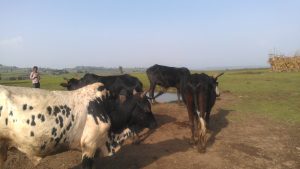ESSP Working Paper 129, by Bart Minten, Yetimwork Habte, Seneshaw Tamru, and Agajie Tesfaye .
Abstract: In the transformation of agri-food systems in developing countries, we usually see rapid changes in the livestock sector. However, good data for clearly understanding this transformation are often lacking, especially so in Africa. Relying on a combination of diverse large-scale datasets and methods, we analyze transformation patterns in the dairy value chain supplying Addis Ababa, the capital and biggest city of Ethiopia. Over the last decade, we note a rapid increase in expenditures on dairy products by urban consumers, especially among the better-off. Relatedly, the number of dairy processing firms in Ethiopia tripled over the same period, supplying a significant part of these dairy products, especially pasteurized milk, to the city’s residents. The number of dairy traders increased rapidly as well, with competition between them becoming more intense over time. Upstream at the production level, we find improved access to livestock services, higher adoption of cross-bred cows, a shift from grazing to commercial feeds, an increase in milk yields, expanding liquid milk markets, a sizable urban farm sector supplying almost one-third of all liquid milk consumed in the city, and an upscaling process with larger commercial dairy farms becoming more prevalent. However, average milk yields are still low and not all dairy farmers are included in this transformation process. Small farms with dairy animals as well as those in more remote areas benefit less from access to services and adopt less these modern practices. For these more disadvantaged farmers, stagnation in milk yields and even declines – depending on the data source used – are observed. Download the PDF.
